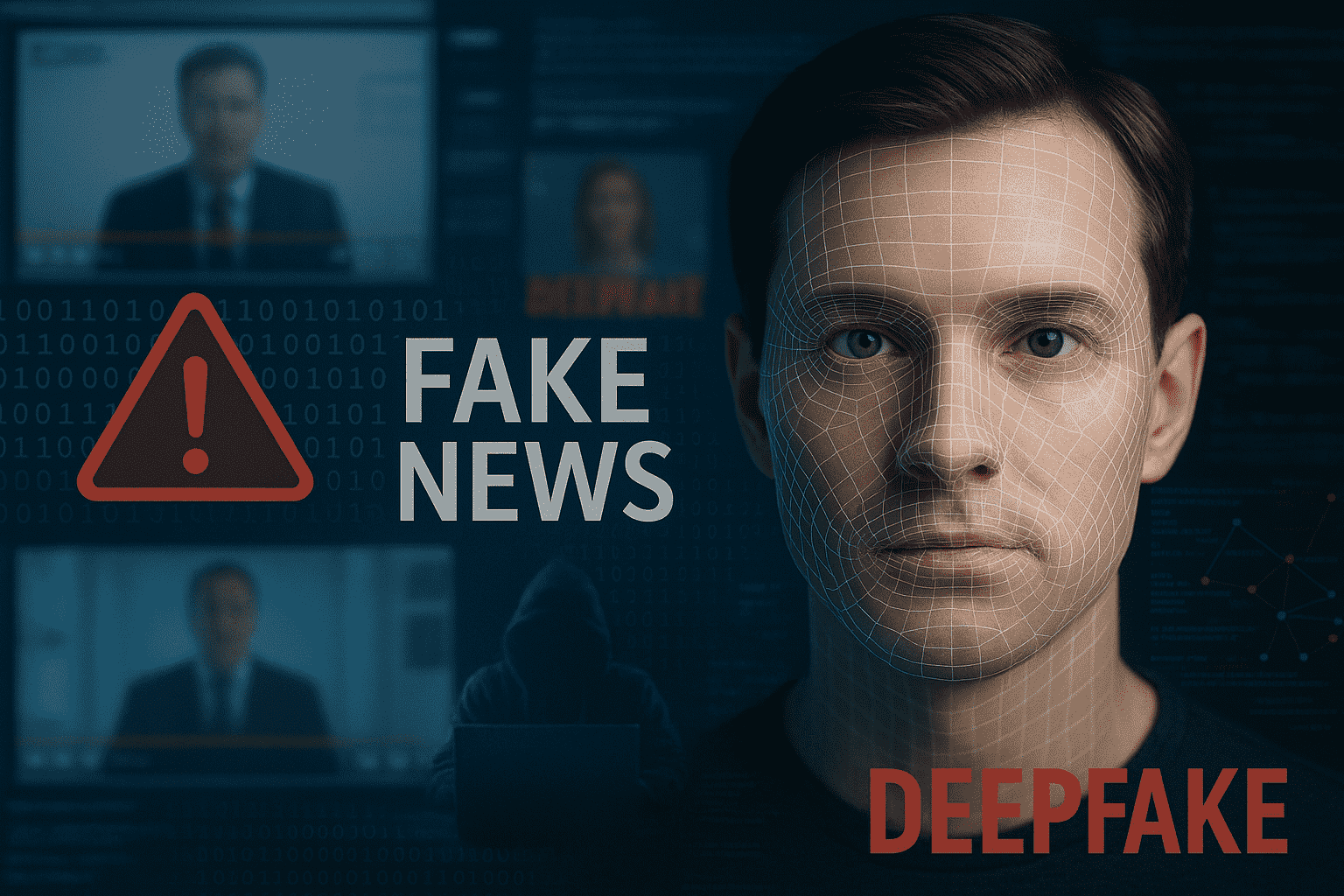
The Dark Side of Simulation: Deepfakes Uncovered
The deepfake misinformation threat is one of the most pressing issues in today’s digital landscape. AI-generated videos, images, and audio can convincingly portray events that never happened, eroding public trust and enabling large-scale deception. In this guide, we’ll explore how deepfakes work, how misinformation spreads, and what you can do to detect and defend against these manipulative tools.
What Exactly Is the Deepfake Misinformation Threat?
Deepfakes are synthetic media created with artificial intelligence, capable of making someone appear to say or do things they never did. The deepfake misinformation threat arises when these forgeries are used to manipulate opinions, smear reputations, or commit fraud.
-
Example: A fake video of a political leader making false statements during an election season.
-
Impact: Damaged reputations, altered public perception, and erosion of democratic processes.
For an introduction to how AI creates such media, see overview of deepfake technology.
How AI Powers the Deepfake Misinformation Threat
Artificial intelligence algorithms analyze thousands of images, videos, and audio recordings to learn patterns in facial expressions, speech, and movements. Once trained, these models can generate hyper-realistic simulations that are nearly indistinguishable from real footage.
Key AI processes include:
-
Face-swapping: Placing one person’s face onto another’s body in a realistic way.
-
Voice synthesis: Mimicking someone’s tone, pitch, and speech patterns.
-
Generative Adversarial Networks (GANs): Competing AI models refine the fake until it’s highly convincing.
This technology’s accessibility is what fuels the deepfake misinformation threat even non-technical individuals can now create persuasive fakes with minimal effort.
Why the Deepfake Misinformation Threat Is Dangerous
The deepfake misinformation threat isn’t just about fake celebrity videos or harmless memes. In the wrong hands, it becomes a weapon for:
-
Fraud: Impersonating CEOs to trick employees into transferring funds.
-
Revenge: Creating humiliating fake content targeting individuals.
-
Propaganda: Producing fabricated speeches to sway public opinion.
-
Scams: Generating believable fake calls or video messages.
Misinformation campaigns powered by deepfakes have influenced elections and intensified political polarization.
Misinformation Models and the Deepfake Misinformation Threat
Beyond video manipulation, AI-driven misinformation models generate convincing fake text, images, and even voice messages.
How they amplify the problem:
-
Fake news articles: AI can write detailed, seemingly credible stories.
-
Social media posts: Bots spread false narratives at massive scale.
-
Conspiracy promotion: Coordinated campaigns use AI to reinforce misleading ideas.
For more on AI-generated text deception, check out our guide on Bold Lies Detection: The Hidden Danger of Deepfakes.
Weaponizing the Deepfake Misinformation Threat
Bad actors weaponize the deepfake misinformation threat for profit, political gain, or personal revenge. Coordinated operations can unleash massive amounts of fake content quickly, overwhelming fact-checkers and making it difficult for the public to distinguish truth from fabrication.
Common tactics include:
-
Bot networks: Thousands of fake accounts share deepfake videos simultaneously.
-
Influencer impersonation: Using deepfakes to fake endorsements or product promotions.
-
Crisis exploitation: Deploying fakes during emergencies to spread panic.
Detecting the Deepfake Misinformation Threat
While spotting deepfakes is challenging, technology and critical thinking can help.
Signs to look for:
-
Unnatural facial movements: Lips not matching the words.
-
Lighting mismatches: Inconsistent shadows or reflections.
-
Odd audio cues: Unnatural pauses or mismatched background noise.
Tools for detection:
-
Deepware Scanner – Scans videos for manipulation.
-
Microsoft Video Authenticator – Estimates likelihood of tampering.
-
Social media AI moderation tools that flag suspicious uploads.
Protecting Yourself from the Deepfake Misinformation Threat
The best defense against the deepfake misinformation threat is awareness combined with practical safety steps.
-
Verify sources: Check reputable outlets before believing or sharing a story.
-
Reverse search images: Use Google Images or TinEye to confirm authenticity.
-
Install browser tools: Use plug-ins that highlight suspicious content.
-
Cross-check news: Look for the same information from multiple reliable outlets.
The Future of the Deepfake Misinformation Threat
As AI advances, deepfakes will become even harder to detect. Detection tools must evolve in parallel, and public education is critical.
-
Advances in AI detection: New models can analyze subtle artifacts invisible to the human eye.
-
Media literacy programs: Schools and companies are teaching how to spot synthetic media.
-
Legislation efforts: Some governments are creating laws against malicious deepfakes, though enforcement remains complex.
For strategies on improving media literacy, visit the National Association for Media Literacy Education.
Staying Ahead of the Deepfake Misinformation Threat
The deepfake misinformation threat represents a serious challenge to truth and trust in the digital age. By learning how it works, recognizing its signs, and using available tools, you can protect yourself and others from falling victim. Awareness is your strongest weapon — stay skeptical, verify sources, and share responsibly.
FAQs
Q: What is a deepfake?
A: An AI-generated video or audio clip that fakes a person’s appearance or voice.
Q: Can deepfakes be detected?
A: Yes, but it requires a mix of technology and human analysis.
Q: Are deepfakes illegal?
A: In some countries, malicious deepfakes are prohibited, but global laws vary.
Q: How can I help stop misinformation?
A: Verify before sharing, report fakes, and educate others.
Author Profile

- Online Media & PR Strategist
- Hello there! I'm Online Media & PR Strategist at NeticSpace | Passionate Journalist, Blogger, and SEO Specialist
Latest entries
 ColocationNovember 12, 2025Colocation Security Model Implementation
ColocationNovember 12, 2025Colocation Security Model Implementation Artificial InteligenceNovember 7, 2025SAP AI Strategy Enterprise Advances and Developer Tools
Artificial InteligenceNovember 7, 2025SAP AI Strategy Enterprise Advances and Developer Tools Scientific VisualizationOctober 29, 2025Federated Learning Technology in Medical Privacy AI
Scientific VisualizationOctober 29, 2025Federated Learning Technology in Medical Privacy AI Scientific VisualizationOctober 29, 2025Brain Visualization Ethics: Balancing Innovation and Privacy
Scientific VisualizationOctober 29, 2025Brain Visualization Ethics: Balancing Innovation and Privacy

